
Marketing White Paper
It’s Worth Millions to Not Use the Best Idea That Can Be Agreed Upon
This white paper addresses the phenomena driving the largest disconnect between modern advertising and marketing techniques and the perceptions, pressures, and subsequent actions with institutional leadership desiring to digest the rapid changes in methods, technology, and strategy.
The Question:
Is the consensus management philosophy the best approach for managing the creation process to effectively grow brand or product marketing results once acknowledging the dynamic diversity required to connect with prospective customers?
The Forces of Change
Before getting too deep into buzzwords, let’s step back and be clear about what we are addressing. Very simply, it’s the idea of utilizing one agreed upon representation of your product or service that’s supposed to appeal to everyone. This begs the question to be answered. How does using a management process that is built upon a consensus solution, with a single approved creative direction, provide the opportunity to address multiple different perspectives that must be accommodated to engage and advance the customer acquisition journey?
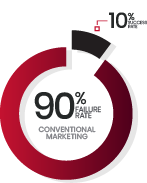
It does not and cannot. There is a fundamental conflict of opposing philosophies. When a “management” philosophy is overlaid onto a creation and custom manufacturing process, there is no escape from this conundrum. The foundation of the creative and messaging process relies on allowing many different nuances that address the individual stakeholder for each cohort and segmentation. This type of management influence forces messaging and strategy to be diluted and off trajectory.
The exact same dollar of advertising that’s used to connect to the 10% of your potential target audience with a single agreed-upon message becomes wasted and not relevant to the other 90% of cohorts that could be introduced and motivated by the brand messaging. When creative is executed with a management philosophy designed for managing people instead of creativity, this single action dilutes the opportunity to drive connection with more prospects.

Efficiently Connecting with New Methods
Millions of campaigns are launched each day, contributing, on average, to more than 90% failure rate of marketing initiatives for most conventional marketers. It’s not surprising then that the companies who consistently create the 10% of successful campaigns harness new processes and technology expertise to see much greater conversion and ROI. 90% of the 10% successful marketing campaigns are created and deployed by new breed, technology-adept agencies. 90% of marketing dollars that fail to connect continue to repeat the failures, now perceived as norms, by relying on what has worked for past outcomes.
Both offer a comfortable level of consistency, convincing their constituencies the returns are normal. If someone expects 2% ROI and they received 2%, then it’s all good. Those who expect a 200% return on investment for their marketing dollars and receive it, that becomes the norm. The few advanced, integrated agencies who create high ROI work do so with new methods and technology consistently for all different types of industries.
Our objective with this conversation is to discuss the common denominators of this marketing phenomenon and how to optimize your marketing results, provide instant testing alternatives, and offer a quantifiable opportunity to look deeper into the added possibilities of new marketing capabilities and capacities.
The act of creating something that looks good to a few leaders because it mirrors leadership’s paradigm is the worst possible manner of execution when designing marketing and advertising that converts prospects within the wild of digital channels. The process of approvals is inclusive of meetings where stakeholders vote for which creative they like best, minimizing the plethora of nuances within the creative process to an image and headline.
By default, team-oriented approvals result in leveraging the single message that could be agreed upon. While it will resonate with those who see the world from the same paradigm, are already informed of the brand, and in the same “buying stage” as the executives in the conference room, those are the only prospects it will efficiently connect with. Read that sentence again. This is a basic misalignment in understanding cohort psychographics and buying cycles. Catering individual messaging to prospects to resonate with where they’re at in the buying cycle creates dynamic marketing and advertising that yields hundreds of percentage points better return on investment, and faster execution for the same or less total budget.
The new neuromarketing methods have proven to work better (higher conversion resulting in a greater ROI) for more than a decade. So why, once proven emphatically with many campaigns and results, do some institutional enterprises resort to any other process in order to not embrace the new methods? What drives this idea within certain institutional brands, that pride themselves on methodical change, act as if nothing has changed in communications and commerce technologies, the most documented area of change in all areas of industry in business.
This challenge becomes the most guarded industry secret as each organization levels and normalizes its ability to grow and harness new and changing expertise that did not exist when leadership was building their experience. It’s a double-edged sword. We don’t believe institutions need to turn over staff, rather, recognize and admit that basic logic is violated when continuing to assume outdated processes/facts/truths are the standard for new methods, technologies, strategies, and operations.
Integrated strategy and data-based marketing agencies have the capability to create a multitude of different messages for the same campaign, in many different channels and target them individually to best appeal to many different target audiences for the same cost as traditional one-to-many advertising. As stewards of the marketing discipline, we need to examine why the old school graphic design workflows of yesteryear are allowed to persist when it dramatically affects the health and ability of brands to grow or pivot in the digital age efficiently. We should also take into consideration that most leadership and executives accumulated their knowledge of normal or expected marketing processes before these capabilities existed over the last couple of years.
Why then, when these approaches are now easily available, do brands choose companies that normalize marketing dollar waste? We believe the perennial, basic challenge of growth and change in business are the same. Some may believe that if those executives, companies, and workers admit this to be true, then what does it say about their value, if they now have no idea how to market the new way? If the new way is not allowed to be compared to or seen, then there is no need for change, resulting in status quo and job security.
Cutting Through the Clutter with Relevance and Engagement
Business understands good advertising cuts through the clutter by being intrinsically more relevant and engaging to a scalable multitude of best target audiences. While many cultures embrace consensus management as the process of team members working to develop a single solution, with each agreeing to support whatever decision is made in the best interests of the whole, this is a management philosophy, not a creation method. Logically and rightfully so, consensus management is a way to manage people… not a practical application or efficient philosophy for the creative process.
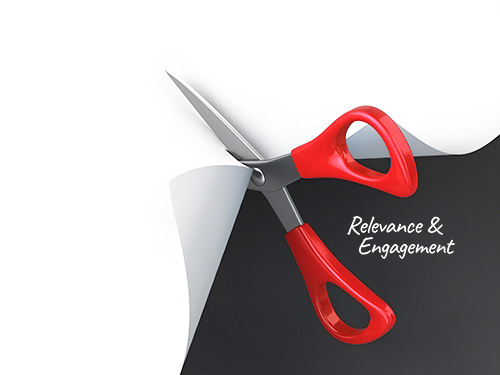
When applied to marketing and advertising messaging and creative, consensus management forces a diminishing return on investment for your marketing spend. By design, consensus management paradigms of the one agreed on look and feel are forced upon individuals outside of your organization, who are in the awareness and consideration phases and attempting first to invest into learning about a brand that “fits” them.
Consensus management forces outliers or minority opinions to be carved into what all can agree upon. What happens when your market is made up of individuals who all have minority opinions, as each sub-cohort might represent 10-20% of the best targets? By eliminating segmentation and minimizing the messaging and placements to only one cohort, we leave 80-90% of the prospects who could be interested in your brand unaddressed, all while wasting the media dollars for the other 90% of messages. The challenge, when we study the mind’s reaction to messaging and image stimuli, we can quantitatively measure how each human reacts differently to the same image and words.
Fundamentally, if we approach the job of creating communications to address and connect with the greatest number of best target leads, customers, and loyal advocates of your brand, product, or service with a one size fits all approach, we design into each campaign the assurance that a small percentage of those who are best targets would not even respond to the advertising.
Why? It perfectly fits the mind’s eye of those who approved the advertising. The psychology of buying and logic supported by undeniable peer-reviewed quantitative research informs us to create marketing with the most relevance and engagement for each potential stakeholder. This means addressing the many different dispositions of each target audience’s behaviors.
This white paper details how this simple oxymoron of deploying a management philosophy and overlaying it in the creation of modern advertising campaigns is fundamentally at odds with creating efficient, scalable, and reliable results.
We strive to offer insights into the root causes, effects, and simple solutions to ensure high ROI marketing and advertising for the same budget and less time invested with classic workflows and traditional work teams.
What is the Value of an Idea?

Ideas can be a commodity, especially when it comes to advertising. Great marketing and advertising is not so much about an idea or direction, rather, it’s about the execution. As consumers, we know the truth ... it’s not about the idea of buying something, it’s the execution experience within the buying cycle that matters. With advertising, many efforts sound good on the surface, particularly if it’s an internally created idea that needs to be defended to support your team stakeholders.
Many in the industry (the 90%) believe efficient and responsible advertising is just getting people to react to a picture or headline. Unfortunately, not all buyers, stakeholders, constituents think the same things are relevant and engaging, therefore, advertising needs to be more relevant and engaging to more target audiences. Adding to this concept, the growth of a target audience comes from expanding the amount of people the brand becomes most relevant and engaging to. This leads to the question: how does one approved ad campaign address the multiple stakeholders?
Unfortunately, not all people are buyers of your products and services, nor are they thinking the same way, at the same time and place as the executives making the approval calls or creative decisions. Most prospects will form opinions based on their own paradigms and what they know to be true.
With consensus management, the need to please or agree with internal stakeholders takes precedence over the end objectives of the advertising investment. To agree on one thing, then forces the inability to connect to many more. Therefore, in relation to marketing, the opinions of different departments, managers, and c-suite overrides the objective of effectively connecting with more of your best customers, solely because likes, dislikes, and paradigms of a single cohort of managers. This leads to broadcasting one message—as if it was 2005—for all interested parties, no matter who they are, where they are in the buying cycle, and what product they are interested in.
Again, the challenge is each human has their own truth, paradigms, and drivers. To stop the homogenization of marketing communications of being in lockstep with how leadership thinks is a leading value agencies provide.
Think about the contrast in the value of an idea when it is properly rightsized and implemented with precision to create brand growth, customer preferences, efficiencies, and brand advocacy ... or not.
Connecting and Converting More
Crafting perfect ads that connect and convert is more than choosing a picture and headline. With neuromarketing, the ability to leverage human psychology to influence others to take action within different cohorts or target audiences is driven from getting the right message to the right person, at the right time and in their place of choosing.
FabCom, an integrated marketing and advertising agency in Scottsdale, AZ, works to truly understand the minds of each cohort at each stage in the buying cycle for each product through Neuromarketology.
Top MarCom agencies have developed decades of intense, perennial training to teach marketing executives how to study and think like each cohort in order to best connect with each target audience. We find this training is in contrast to normal executive training that promotes the use of most common experiences to determine what will be accomplished profitably. Neuromarketers accomplish comprehensive work to understand the demographic, psychographic, and behaviors of your target audiences.
This results in the ability to craft one-to-one marketing communications with pinpoint accuracy to truly start the brand conversation with the best prospects. And through modern waterfall production, integrated advertising agencies can spend the same ad dollars and earn much more return on your marketing investment.
Consider this, consensus management is about coming up with a solution that is “good enough” for everyone based on coming to a consensus for approval. Is your marketing, messaging, and brand preferences that create value in the eyes of others who don’t know the brand yet something that should be judged as “good enough” based on internal preferences? Or, should marketing be tailored to address why a brand is the perfect fit for what the individual prospect wants or desires?
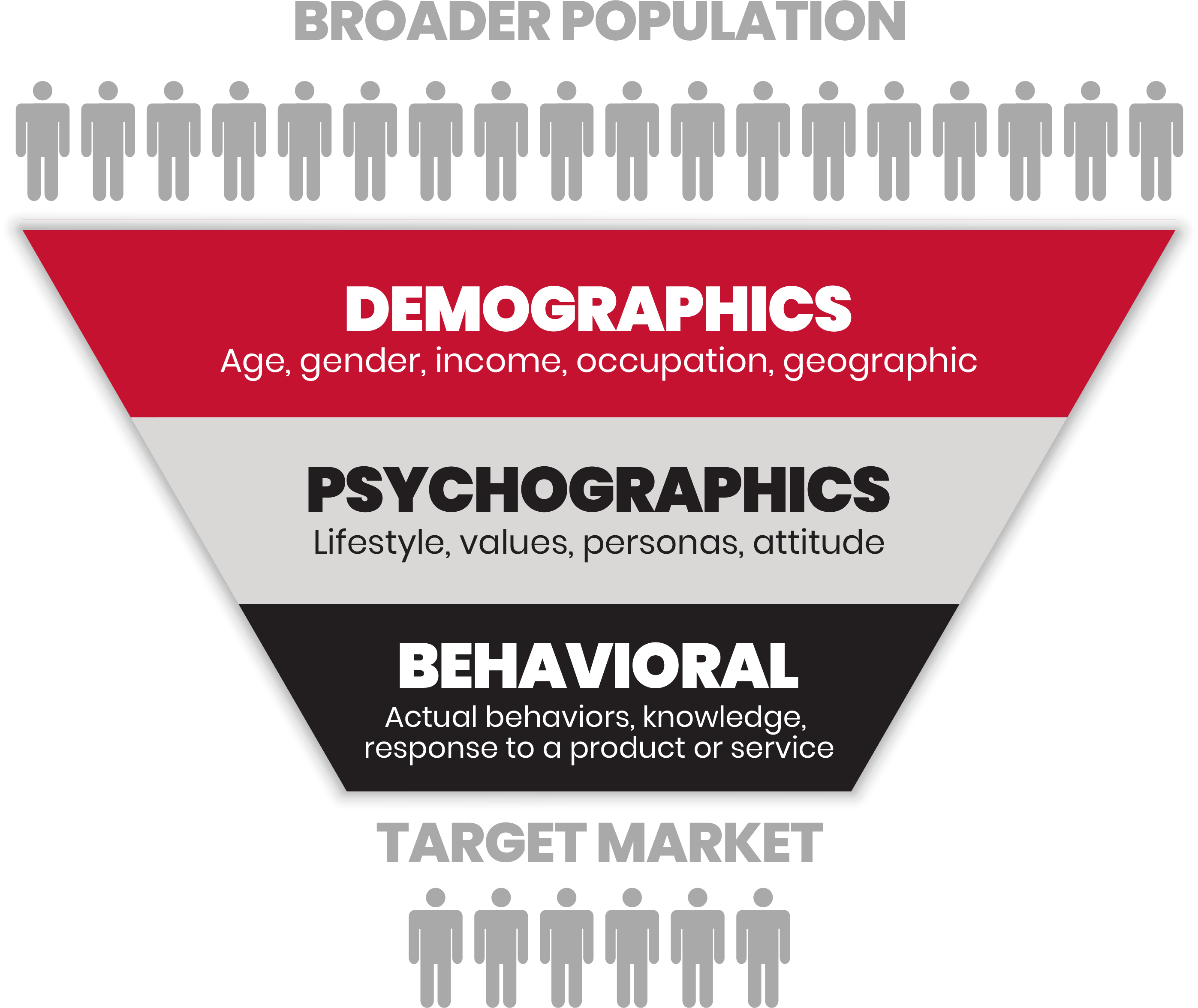

Furthermore, there is cognitive dissonance that belies decades of peer reviewed research confirming that preferences and imbued biases are intrinsic to and the drivers of personal behaviors of every age cohort. This is outrageous from a critical thinking point of view. As industry leaders, the justification for not applying common business knowledge to marketing communications and applications of the theory is baffling. When using consensus management, are these nuanced preferences and individual biases somehow removed? This vacation from basic logic adds another layer of complexity when defaulting to consensus management during the creation and approval process of advertising.
By interjecting the will, preferences, and egos of internal perspectives (“I know my customers, I have been doing this for 30 years,” or “don’t tell me how to place or make marketing, I’ve been doing it since before you were born” or “don’t tell me how to do my job”), tremendous internal bias, myopia, and ego are steeped in a brand’s advertising. Additionally, we must consider other truths that drive the ability to connect to your best target audiences—no one likes to be advertised to, but everyone loves to understand the differences in what they are considering.
Each stakeholder is in a different place of understanding than the ruling executives of a brand, while each prospect is in a different place in the buying cycle. So how does one size fit all imagery or messaging drive the return on investment for your marketing efforts?
Consensus management is a great way to operate some departments or institutional companies. Although, defaulting to that philosophy in the creation process of marketing and advertising—which needs a variety of perspectives—is in direct operational contrast to what’s needed for success.
Situational Application of Theory
Recently, a long-time client came to the agency with an unusual project. The client, a university with multiple separately operating schools/colleges with multiple degree programs each, wanted to internally create a digital ad series for two of their schools/colleges and asked if FabCom would implement and run the campaigns for them. They wanted to test a newly rebuilding creative services area and use agency historical results as a split test.
As an integrated agency with all marketing and advertising services and capabilities under one roof, this is not the typical process followed for digital ad creation and implementation. Although, due to the long-standing relationship and tenure of client, FabCom agreed.
The client did the best they could in-house under consensus management, synergizing the 50–65-year-old executive perspective, and produced a single ad and landing page for each school/college, following a one size fits all creation process.
For the purpose of comparison, FabCom is sharing strategic considerations for the cross-channel implementation of digital ads with one size fits all advertising vs. dynamic advertising including progressive messaging. We also share an ROI value comparison to show the net value of integrative methods deployed by the agency vs. in-house consensus.
Agency Supported Implementation
When the day came for in-house to provide the one size fits all ad to the agency for placement, the agency still needed the following (and this is just for two ads across multiple platforms, not the multiple ads with progressive messaging that the agency typically places):
Agency Support Provided for Optimization of One Size Fits All Methods
Ad copy
- Headlines and descriptions
-
- Social ads use different copy than what is on the graphics.
- Google/Bing use imagery with no copy, the headlines and descriptions are required and can be similar to the copy on the social graphics.
-
- Headlines: 30 character count
- Descriptions: 90-125 character count
Graphics
- Search ads (Google/ Bing)
-
- Graphics with no embedded copy
- Size 1200x628px and 1200x1200px
- Social ads
-
- Graphics without an embedded CTA.
- Square graphics are 1080x1080px (1:1 ratio).
- Story ads are 1080x1920px (9:16 ratio)
- Horizontal graphics are 1200x628px
The devil is in the details of creating digital ads. To implement properly, advertisers need many file versions and variations per segmented ad with each of them tracked and progressing on the buyer’s terms. In addition to the spec requirements for digital placements (above), there were compounding efficiency, accuracy, and speed to placement challenges with the agency receiving the right assets from third-party creators or graphic design specialists working to fulfill one size fits all specifications.
Read more about our rapid optimization process for placing digital ads.
Extra Effort Ensures Success
The amount of time the agency invested with the client to facilitate the right file sizes cost unnecessary overhead and administrative labor, and most of all, delays in the advertising placement (if nothing is running, no new leads are coming in, and they can’t be recovered). The agency invested days to get two one size fits all ads placed properly with the forced in-house workforce once the files were provided. In contrast, with the agency’s waterfall production, thousands of unique ads could have been produced, each appealing to different cohorts in less than a business day. And all for the same total cost.

How? Disparate suppliers or salaried employees most likely do not get paid more to create hundreds or thousands of extra ad versions manually with nuances to the placement, files, and tracking. Or we find another common restaining force: many have not developed company-wide systems that top agencies leverage to produce a file once and use it in many different ways via technology stacks, methods, and practices that were not in existence a few years ago.
Instead, the motivations of third-party creators can be the opposite. When considering the truths behind the ideas of compensation and incentive driving workplace performance, it’s most likely salaried employees facing many times the work (affecting only 20% of the costs of campaigns) that requires systems, process, and methods they do not possess. Marketing industry leaders simply recommend a different way, leveraging methods and technology to achieve the ROI desired. To stakeholders without these capabilities and methods, more nuanced and inclusive work equals more liability due to not having the right methodology or processes to produce dynamically prolific multi-channel assets and distributions.
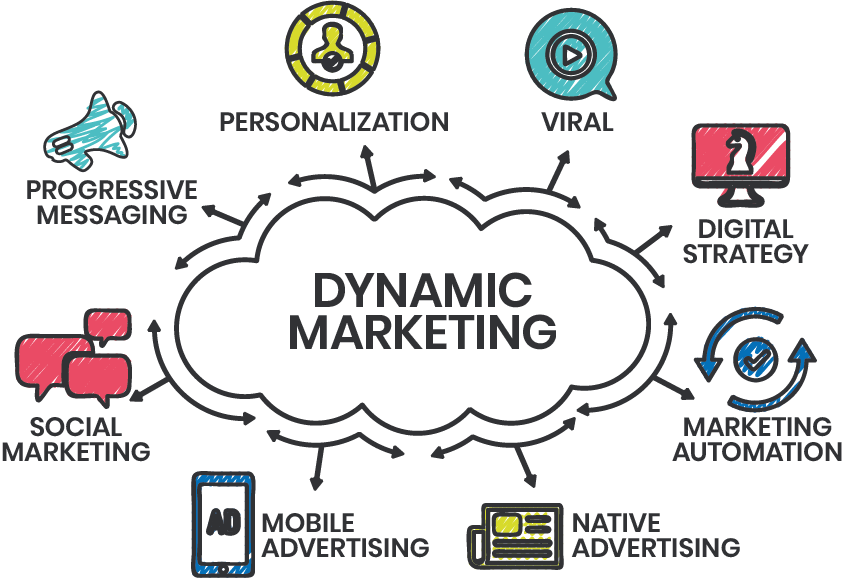
It’s important to consider the amount of coordination time projects like this consume. When not created through waterfall production, costs and necessary nuances to implement without the proper capabilities makes the mountain of marketing effectiveness insurmountable. Without neuromarketing methods and waterfall production, the inertia and “hassle factor” driven from including each target’s connective nuance is then simplified to one size fits all advertising methods leveraged and homogenized to “good enough”.
Let’s be real and honest about what we are talking about: digital communications, channel distributions, individual prospect behaviors, and tracking. These areas of commerce have progressed, changed, and differed the most in the last 30 years, and in the last five, have doubled industry change in form factors (see this technology progression white paper for more information).
Helping clients comprehend and rightsize new capabilities is also the first job of a great advertising agency partner.
Accomplishing this task with grace as the brand’s internal executives are trying to look like experts empowered by buzzwords and instilling the perceived value of internal marketing staff, becomes the tight rope the agency must walk as stewards. A great agency will be dutiful by helping leadership keep up the appearance while also leading the brand to the promised land for years on end. This becomes the trick of great marketing agencies that stand the test of time.
Marketing is a Vital Business Process—Listen to the Experts
No matter your business—whether it be making widgets, repairing human hearts, or delivering a service of kindness—the business of winning more business for your brand is a very specific discipline that crosses every industry. Connecting with other humans through digital media platforms is more autonomous from the operations of an enterprise, just like how accounting is common to yet different from making the widgets or delivering a service.
When the creation of your brand’s advertising is simplified back to the best idea of consensus, the brand gives up all the nuances and progressions learned from digital targeting and distribution data available to accomplish the job with excellence and scalable efficiencies. By following the one file workflow, the client loses out on building brand assets in a system that allows for highly efficient spinning of variables to increase reach, relevance, and engagement of ad placements and their effectiveness. Waterfall production drives down the costs and timelines required to produce variables to pennies on the dollar while multiplying the ROI by hundreds and even thousands of percentage points, when measuring return on investment of marketing or adverting spends at the same time.
Advertising and Conversion Strategies
Among the key differentiators setting new breed integrated marketing teams apart from in-house capabilities and most conventional marketing firms or media companies is the ability to align and empower advertising messaging with tools and methods of many disciplines. At FabCom, our ability to leverage progressive messaging techniques and psychological triggers to promote action is powered by foundational differences in processes and methodology to ensure advertising that connects and converts.
One-to-one dynamic automated campaigns work from within the prospect’s natural references to the product that drive personal interest based on each target audience’s perspective. FabCom team members are trained on how different cohorts think and reverse engineer that thinking, experience, and psychological and behavioral research to directly message to individual target audiences, creating progressive advertising that is uniquely relevant and engaging.
When leveraging progressive messaging properly, the calls to action pay off the advertising message. Meaning, the lead clicks on something interesting and they receive information on exactly what they expect within a high-quality branded experience. Of course, then we must have something that is more relevant, engaging, and motivating for each person to dive deeper. Neuromarketology methods create instant authenticity of brand and messaging alignment, creating inclination from the prospect via actions that match their intent/desire, thus influencing more conversions.

Internal teams are motivated and have the need for the designed elements to reflect their perspective of consensus management more prominently, leaving a delta in the best thing to say or do for the target audiences. This delta results from internal perceptions vs. outside perspectives ingrained in Neuromarketology expertise focused on the personal, target-driven characteristics derived from the mapping of the targets’ demographic, psychographic, and behaviors to the product or service attributes.
Results
The digital ad campaign was a 60-day test that ran March 15th – May 14th, 2022.
For ROI comparison purposes, the agency analyzed campaign spends for a different ad group for Program 1, which is a part of School 1, over a common time period. All ad version creation and implementation for Program 1 were handled by the agency via waterfall production.
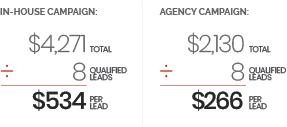
The agency leveraged advertising and conversion marketing strategies empowered by its Neuromarketology methods drove campaign results at 200%. As you can see, the agency’s waterfall production methods garnered the same number of leads for half the cost of the client’s one size fits all ad efforts over the same period.

Lead ROI Value Comparison
To keep the variables of comparison intuitive, we assumed a 38% lead to purchase rate for the prior ROI comparison. While the average varies per industry, it’s typically below 10%. We’re providing a second comparison to show the true value in conversion efficiency for clarity.
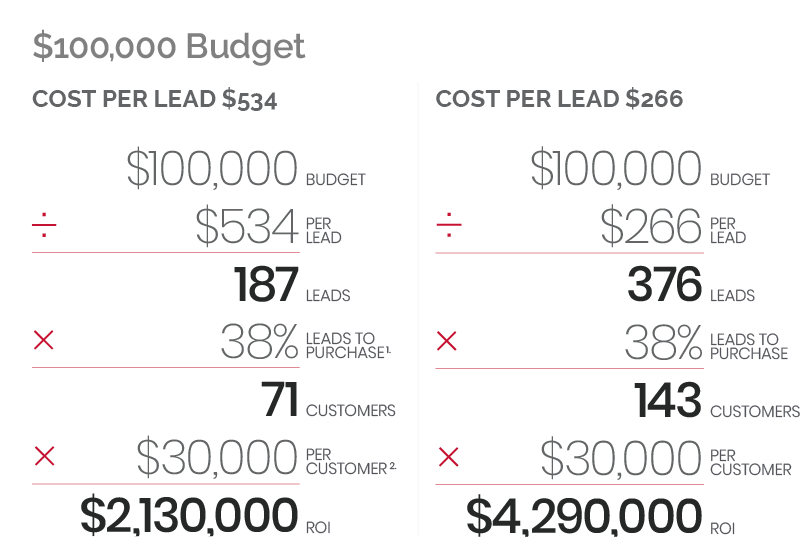
If the budget is $100,000, in-house would return 187 leads creating 17 customers resulting in $510,000 conversion overhead. While the agency’s processes would return 376 leads creating 143 customers resulting in $4,290,000.
If the budget is $500,000, in-house would return 937 leads creating 356 customers resulting in $10,680,000 conversion overhead. While the agency’s processes would return 1,877 leads creating 7513 customers resulting in $21,390,000.
If the budget is $1,000,000, in-house would return 1,873 leads creating 712 customers resulting in $21,360,000 conversion overhead. While the agency’s processes would return 3,755 leads creating 1,427 customers resulting in $42,810,000.
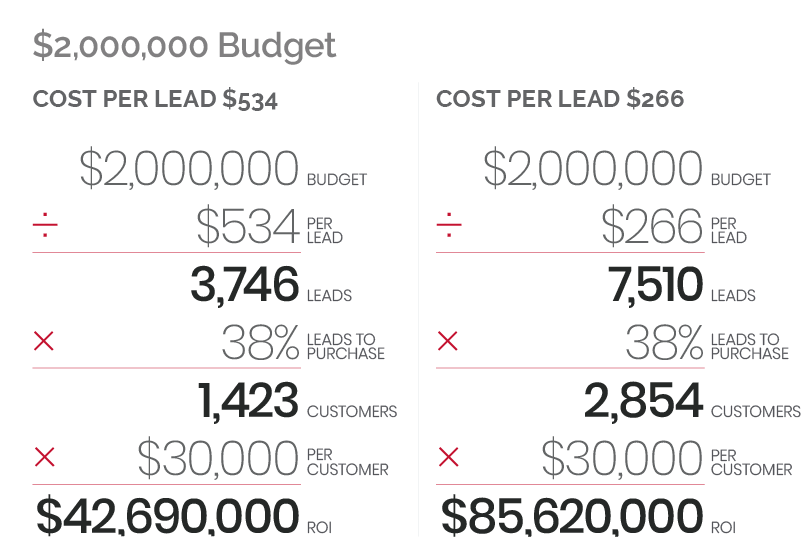
If the budget is $2,000,000, in-house would return 3,746 leads creating 1,423 customers resulting in $42,690,000 conversion overhead. While the agency’s processes would return 7,510 leads creating 2,854 customers resulting in $85,620,000.
1 38% is FabCom’s average lead to purchase rate. See next page for further details on this number.
2 $30,000 is a sample average lifetime value of a customer
Lead and Conversion ROI Value Comparison
To keep the variables of comparison intuitive, we assumed a 38% lead to purchase rate for the prior ROI comparison. While the average varies per industry, it’s typically below 10%. We’re providing a second comparison to show the true value in conversion efficiency for clarity.
If the budget is $100,000, in-house would return 187 leads creating 17 customers resulting in $510,000 conversion overhead. While the agency’s processes would return 376 leads creating 143 customers resulting in $4,290,000.
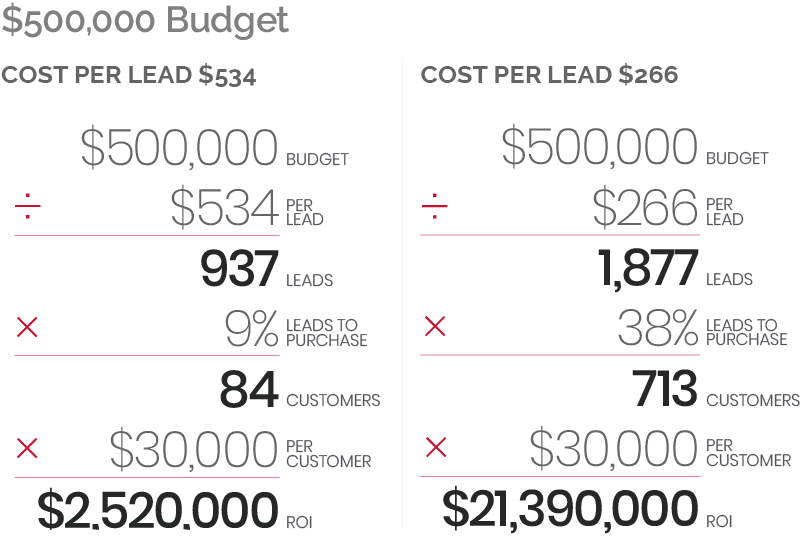
If the budget is $500,000, in-house would return 937 leads creating 122 customers resulting in $3,660,000 conversion overhead. While the agency’s processes would return 1,877 leads creating 713 customers resulting in $21,390,000.
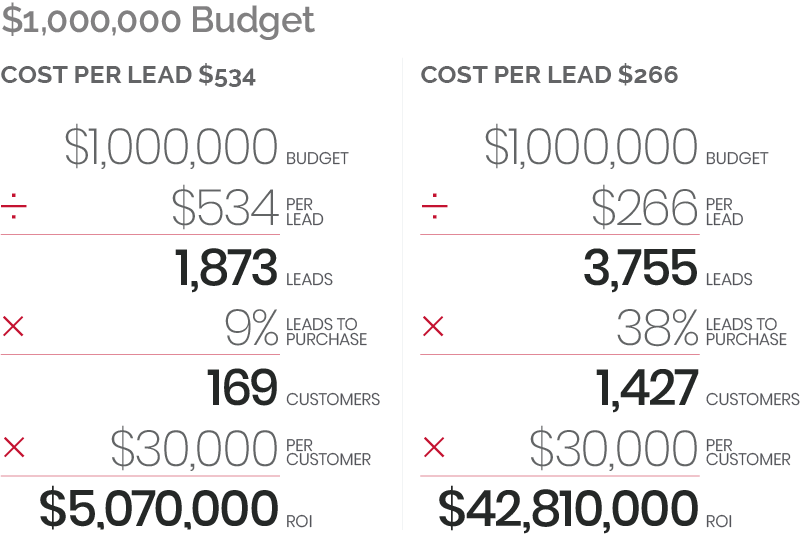
If the budget is $1,000,000, in-house would return 1,873 leads creating 169 customers resulting in $5,070,000 conversion overhead. While the agency’s processes would return 3,755 leads creating 1,427 customers resulting in $42,810,000.
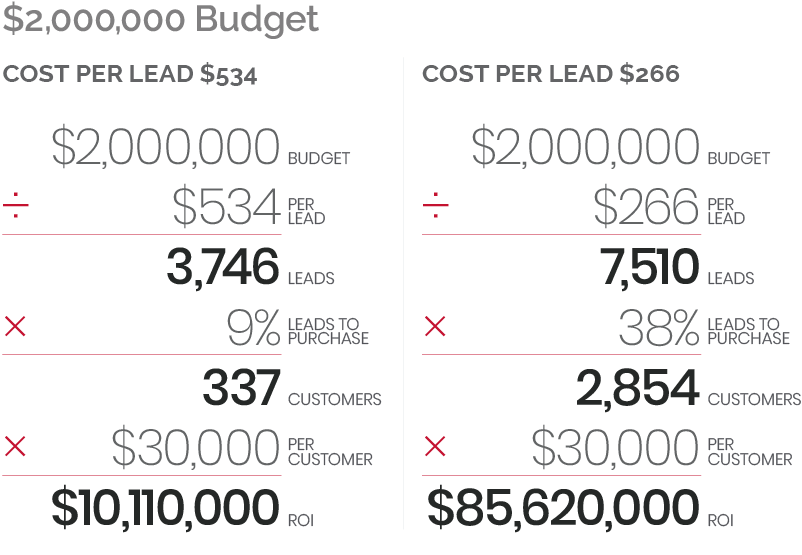
If the budget is $2,000,000, in-house would return 3,746 leads creating 337 customers resulting in $10,110,000 conversion overhead. While the agency’s processes would return 7,510 leads creating 2,854 customers resulting in $85,620,000.
1 38% is FabCom’s average lead to purchase rate. See next page for further details on this number.
2 $30,000 is a sample average lifetime value of a customer
We provided two different comparisons to show the value in lead efficiency and conversion efficiency for clarity. It’s important to note that FabCom’s leads historically convert, on average, at 400% more because of the agency’s ability to create uniquely resonating progressive messaging by understanding target audiences’ demographic, psychographic, and behavioral attributes and matching those to the brand’s products and services. Leads are empowered to self-select and are motivated to purchase since the product is already “perfect” for them, based on their nuances being relevantly and progressively messaged.
It truly can be worth millions to your brand to not just go with the “best” idea decided by internal stakeholders. No matter how gifted, it is impossible to escape the internal paradigm that removes the ability to think like all the customers they don’t have, who would purchase from the brand but knows nothing about the brand yet. Sometimes, in some cases, it’s best to let the professionals do what they do best. Just like in some cases, it’s best not to council your own child, even though you know them best. A competent professional can learn about the scenario, but it is impossible for a parent to know and apply all a professionally trained youth psychologist can bring to the table.
It becomes a challenge of “why do we have an in-house marketing department if we use the agency,” putting unnecessary pressure and comparison on internal players. If leadership could understand these forces, then it would keep the internal teams from trying to compete with the agency. Instead, brands can work with a supportive, passionate team assembled from scores of talent with the capabilities to create high impact advertising and instantly enjoy superior ROI brand marketing.
From One Size Fits All to One-to-One Progression
What’s important to know about this situation is that the image, headline, and CTA the client provided were all “good enough” to work. The client’s in-house team created a great ad, but it was the best they could do synergizing a single perspective determined by consensus management. The overall campaign was a one size fits all approach with non-progressive messaging. While this type of work is “good enough” to get some leads from one segmentation, it doesn’t cover the umbrella of progressive content leads need to be nurtured to purchase, especially for graduate education.
Even when your campaign is good and everyone can agree on the perfect image, an image that’s “just as good as what the agency can do”, it’s not good enough. Just because you like it doesn’t mean it’ll work, or that it’s good advertising that will resonate with the proper target audiences at just the right time, in just the right place.The imbued biases of consensus management naturally exclude the dynamism of target audience perspectives that are necessary to speak to and nurture to purchase. If brands want more leads to take action, it’s best not to send them all the same message. The one-size media model doesn’t work and hasn’t worked for a decade.
The same dollars can accomplish so much more with neuromarketing methods and integrated waterfall production techniques because it has the focus and structure to penetrate the advertising noise and motivate action. The first step is spending less on media and more on strategy and informed creative, yet common institutional mentality is perpetuated by “we don’t have the money this year, we’re just going to run individual ads.” Meanwhile, the spend on media placements to run the individual ads (that aren’t connecting to the 90%) is more than enough to run a dynamic integrated campaign.
Which pays off more? How much is it worth to make the effort to understand the differences in your best customers, rather than assuming they all respond to the same thing the executives “like and agree would be best”? What’s the value in changing outdated processes and trusting a top integrated marketing agency that has invested millions into benchmarking something new for your brand, that your brand is just learning.
Here’s the conundrum with progressively messaging digital ads that resonate, the restraining force for in-house and small agencies is it takes the equipment, capacity, and deep training. This type of work takes turning thousands of ads on and off on a daily, weekly, and monthly bases vs. sending ads once and waiting for results.
Integrated Marketing and Advertising Agencies
This type of work takes capacity, sophistication, and waterfall production. It’s a completely different process for developing and including all the variables. The good news, most agencies don’t even realize this shift in possibilities and newfound efficiencies if they’re not considering the dynamic intersection of target audiences’ demographic, psychographic, and behavioral attributes matched to the brand’s products, services, and attributes.

How much does it really cost a brand to keep doing it the old way and not work with an advanced partner? It takes at least 5-7 years to build the capability to work in this manner—there is a massive barrier of entry. Unless media budgets are over $10M a year, one brand could never afford to buy the capital equipment and train the talent, only to have equipment quickly antiquated as technology is moving so fast in the communications area and the trained talent turn over, on average, in 2-3 years.
When the risk, training, and capital investments are shared among many brands is it efficient for an advertiser to use these highly effective methods, instantly today and next month. When working with a top agency, brands can launch a $100K or $10M media campaign in this manner. If a smaller budget advertiser would like to run a digital ad campaign, this enables cost efficiencies at just 5% of cost of equipment, capacity, and expertise, not years of investment to take advantage of this capability for ROI.
This begs the question: Should you put as much as you can into media-centric vendors or take advantage of the capability and efficiency of the integrated agency wielding the art of marketing to relevantly speak to each potential customer?
Agencies That Walk the Walk
Advertising that works and converts your best prospects is more than a picture and headline. It’s about getting the right message to the right person, in their time and place of choosing. One of the biggest benefits of an agency is the lack of consensus management and imbued bias, as agency teams have specific acumen in how different cohorts think to progressively message to multiple target audiences. This means the real value of an agency is not in its ability to choose the best image and the best headline, but to work as brand stewards to connect to the newest stakeholders who empower marketing and advertising efficiencies to create ROI.
Trust and Believe in the Progression of Business Methods
A one size fits all approach to marketing is so 20th century. With the multitude of platforms and channels accessible and preferred today, digital ads need to be handled via waterfall production to create the efficiencies to progressively message at the rate and frequency needed for conversion. This enables the same dollars to accomplish twice as much.
Trusting the strategic marketing partner clarifies the creation process to optimize efficiency, generate the desired outcome, and maximize advertising spend. The client’s involvement is paramount when providing initial input into what is needed, voicing any considerations based on their technical and industry knowledge, as well as providing the necessary approvals for any project.
This white paper outlines a classic situation that demonstrates the comparative value when brands are considering self-learning new processes in-house and making changes based on internal, operational preferences and perspectives. Bottom line, consensus management works for many enterprises and departments, but it’s not the approach to marketing that will achieve the results brands need in our modern digital economy. For an integrated advertising agency to perform with agility, it takes an understanding of and appreciation for the under-the-hood processes and efficiencies required to produce the desired results for the client.
The process of demonstrating to a client why their best idea is much less than what they could have in the same time frame and budget via agency creation forces an agency to make the client happy and look good or break it to them why it won’t be successful. Without the deep understanding of neuromarketing and integrated production, many times internal ideas and approaches are lacking many of the components required for execution, assuring 90% fail rate and leading marketing success to become fleeting once again.
It truly can be worth millions to not use the best idea that can be agreed upon.
What’s Next?
This white paper discusses, quantifies, and provides opportunities to overcome the many factors driving the disconnect between modern advertising and marketing techniques and the institutional perceptions, pressures, and subsequent actions. So, what’s next?
- Rely on research and data (not opinions and paradigms). Work with an integrated agency who uses quantifiable research, demographics, psychographics, and behaviors to map and target best audiences for your brand.
- Resist the temptation to dilute or fragment agency work when approving via consensus management. Trust the work from the agency.
- Spend less on media and more on strategy and creative. 20% of your advertising budget should go to strategy, about 10% to creative, and the rest to media. That means, for every $50K you spend in media, you should be investing a minimum of $12K-$15K on strategy and creative to create media that will connect with many more.
About FabCom
FabCom, a Scottsdale-based integrated marketing and advertising agency, has always had a mission to seamlessly integrate processes and efficiencies that influence end-to-end attribution, the customer experience, and marketing ROI. Driven by Neuromarketology, strategy, and segmentation, waterfall production ensures visceral, individualized marketing and advertising that costs less to implement.